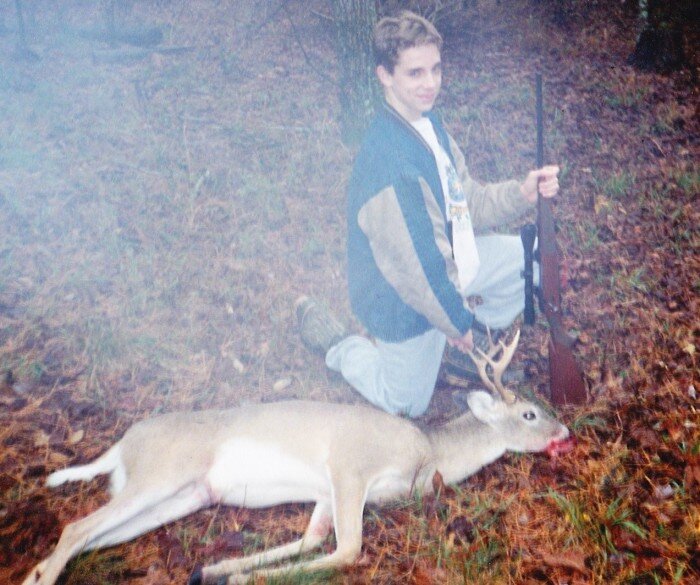Photo 101: Best Wildlife Telephoto Lens
A 40-Year Pro Outdoor Photographer Recommends Best Wildlife Telephoto Lens
The best telephoto lens for capturing great wildlife photos just happens to be a fantastic flower, landscape, action and people lens, too.
In our last blog we promised more details on ISO speed, shutter speed and f-stops, but a reader asked for tips on assembling a great wildlife photo gear package, so we’re going to attack the most important piece of gear for that right here — the essential wildlife telephoto lens.
Capturing good wildlife photos requires getting close, and that's most easily done with a high-power telephoto lens.
If you’re getting into photography to capture great images of wildlife and the outdoor world you love (I did!), you’re going to need a BIG telephoto. And 300mm isn’t big enough. At 300mm you’re getting 6X magnification, the same as in a 6X binocular or riflescope. Just as most hunters and birders prefer an 8X or 10X binocular, most wildlife photographers will benefit from the same magnification in a wildlife telephoto lens.
I suggest starting with a 400mm lens, the equivalent of an 8X binocular. You can alsoconsider a 10X 500mm or 12X 600mm. But know this: the higher the lens power, the harder it is to control. There’s more bulk, more weight and more inherent shake to contend with.
Big, fast telephotos can be bulky and heavy. This f-2.8 is just a 300mm with a 2X teleconverter behind it and a big, long lens shade up front adding length, but it gives you an idea of how inconvenient big telephotos can be.
The fly-in-the-ointment with super telephotos is the large objective lens size needed to create a large aperture. As we covered in previous Photo 101 blogs, large apertures funnel more light to a camera’s sensor that do small apertures. This then allows you to shoot at higher shutter speeds. Fast shutter speeds are critical for stopping moving animals -- and your shaking hands.
5 Ways to Prevent Camera Shake with Big Telephotos
Camera shake is a big problem with big telephotos because the lens magnifies vibrations as well as the image itself. There are several ways to combat this:
Use a shutter speed the equivalent of your lens focal length expressed as a fraction. This means you’d need to shoot a 400mm lens at 1/400 or faster handheld. Most of us find that doubling this speed is safer, so figure shooting at 1/800 sec. with that 400mm, 1/1000 sec. with a 500mm, etc.
Get a super tele lens with as big an aperture (small f-stop number like f/2.8 or f/4) as you can handle. The problem with this is size and weight. The longer the telephoto, the bigger the objective lens must be to get those big apertures. The objective lens of an f/4 500mm, for instance, is more than 5 inches across. That makes the lens heavy. The Canon version weighs 7 pounds.
Push your ISO higher. A high ISO speed lets the camera sensor absorb light at a faster rate at every f-stop. This means you can get by with an f/5.6mm maximum aperture and still shoot 1/500 sec. or faster in good light. Of course, high ISO settings add “noise” or grain to the image, reducing quality somewhat. I’ve found that at ISO 2000 or less I can generally shoot fast enough to stop action and camera shake with a 400mm lens slightly before and after sunrise/set or on cloudy days. In decent light, I’m easily shooting at 1/1000 sec. or faster at ISO 500.
Use a tripod. This was standard procedure back in the slide film days, but it isn’t as fast or easy as handholding. Sure makes for sharp images, though. Use one when you can.
Stabilization. Lens and/or camera stabilization these days helps dampen camera shake by two to four (claimed) shutter speeds. If you can normally handhold a 400mm at 1/500 sec., a stabilized system might let you shoot at 1/125 sec. or even 1/30 sec. without noticeable shake blur in the image. I highly recommend this feature.
A tripod is one way to eliminate camera shake.
The Best Wildlife Telephoto Lens Is...
So how do you process all this and select your best wildlife telephoto lens? Honestly, there is no perfect answer. I’ve been shooting with big telephotos since 1974 and I still debate and agonize over which is ideal. Do I go big and heavy for maximum brightness? Smaller and lighter for easier transport and use? Decisions decisions...
My suggested compromise is an f/5.6 400mm or 500mm. Canon’s f/5.6 400mm weighs just 2.8 pounds and the front element is just 77mm across. Light, quick, handy and still fast/bright enough for effective work if you keep ISO at 400 or higher. I don’t believe Nikon or Sigma make a 400mm or 500mm f/5.6 any more, but double check. Pentax might have one, too.
Another compromise, my personal favorite, is a telephoto zoom. There are many good ones on the market. We’ll cover that topic soon in an upcoming Photo 101 blog.
# # #















